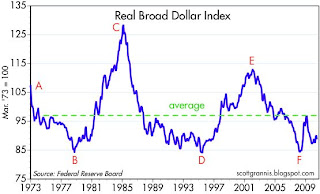Chicago -- (Kitco News) -- Investor interest in gold jumped as prices held and advanced over $1,200 an ounce as safe-haven buying resumed. According to data from the U.S. Commodity Futures Trading Commission, the weekly commitment of traders showed speculators added to long gold futures positions in the week ending Aug. 17. Looking at the disaggregated futures and options combined data, the managed-money accounts added 16,233 longs are now net-long 182,276 contracts, the largest net-long for them since the week of July 13, when their net-long positions totaled 187,077. The peak for the year 2010 to date was 230,422 on May 18. Similarly, in the legacy futures and options report, funds added 19, 557 contracts to make them net-long 226,964. Commercials and swap dealers in the disaggregated reports added to their net-shorts, with the producer category increasing shorts by 10,271 contracts to make them net-short 172,129. Swap dealers hiked their short contracts by 11,878 to be net-short 100,750 contracts. Commercials in the legacy futures and options report raised 25,854 short contracts and are now net-short 272,879. During the timeframe the report covers, Aug. 10 to Aug. 17, gold prices on the Comex division of the New York Mercantile Exchange rallied $30 an ounce for the December contract. A trigger for the rally was holding over $1,200 an ounce. Prices started at $1,198, which was the settlement on Aug. 10 and settled at $1,228.30 on Aug. 17, and prices continued to rise that week. “This shows that financial investors have been a major force in this recent rally of gold prices. In the reporting week up to last Tuesday, prices advanced by 4%,” said Commerzbank in a research report on Monday. Barclays Capital said in a research report Monday, using the legacy futures-only data, that the rise in fund longs was the largest one week rise on a net basis since late April. The rally came on disappointing economic news, which spurred safe-haven buying of gold, as market participants worry about a double-dip recession. Traders also note, though, that volumes during the reporting period were light because of summer holidays. In addition to investment buying, Commerzbank said physical interest could support prices, noting Tuesday starts the festival season in India, when gold is traditionally given as gifts. They also cited central bank buying, with Russia increasing its gold reserves by more than 15 tons in July to just under 725 tons, according to its central bank. “Although the rise in holdings is likely to have come from the country’s own production, this absent supply will contribute to a tighter gold market,” Commerzbank said.
In other precious metals data, there was little significant change in speculative holdings for silver, platinum and palladium. Managed-money accounts in silver added 29 long contracts, but cut 144 short contracts and are now net-long 28,429 contracts. Swap dealers are net-short 1,916 contracts, having added 692 shorts and cut 117 longs. Producers are net-short 52,773 contracts. In platinum, speculators trimmed slightly their net-longs by 299 contracts and added 97 shorts and are now net-long 16,103 contracts. Swap dealers cut shorts by 649 contracts and added 151 longs, making them net-short 6,599 contracts. Producers are net-short 12,804 contracts. The managed-money accounts added modestly to net-longs in palladium, increasing longs by 326 contracts to be net-long 10,230 contracts. Producers remain net-short 9,802 contracts in palladium and swap dealers are net-short 4,400 contracts. The data for copper shows managed-money accounts added to long positions, but increased their short positions by a greater amount. These accounts added 1,025 long contracts and 2,603 short positions, remaining net-long 19,180 contracts. Swap dealers and commercials remain net-short, at 44,550 and 56,432 contracts, respectively. During the time period, most-active September copper rose 2.6 cents a pound, so the swift price drop copper suffered toward the end of last week over global economic health was not included. From Tuesday’s settlement to Friday’s settlement, September copper prices fell 4.75 cents to $3.2910. Commerzbank said because of this: “net long positions have probably continued to fall since then. The still relatively high positions also hide a risk of new price corrections should market sentiment deteriorate further.” By Debbie Carlson, of Kitco News;dcarlson@kitco.com; Allen Sykora contributed to this story.
|




